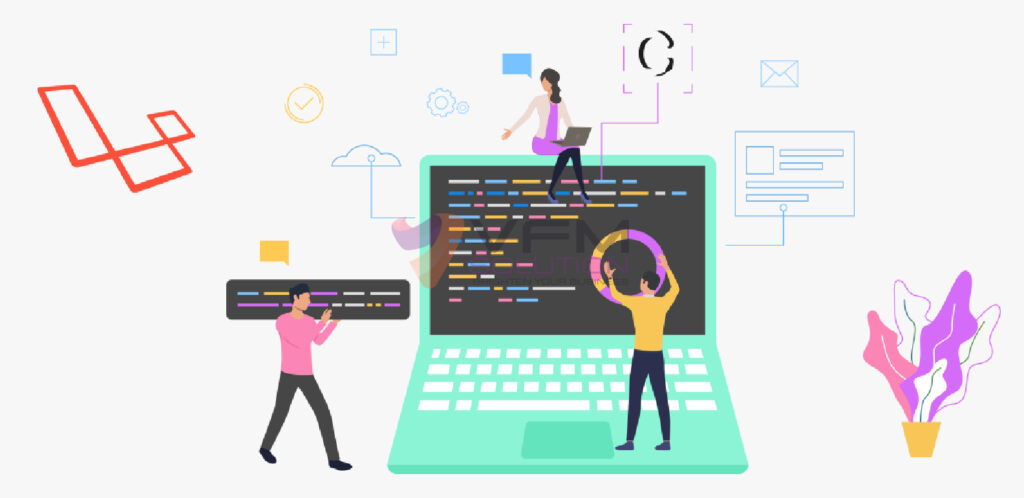Back-end web development is an important aspect that focuses on the server side of websites and applications. While front-end development is about creating an appealing user interface, back-end development ensures the website functions properly, handling data and communication between the front end and the server. If you’re aiming to build websites that offer seamless user experiences, mastering back-end web development is essential. In this blog, we’ll explore what back-end development involves, its importance, and why learning it is a great step for any developer.
What Is Back-End Web Development?
Back-end web development refers to the server-side development of web applications. It deals with databases, servers, and application logic. In simple terms, it’s responsible for managing and handling data exchange between the server and the user interface that the front end creates. This part of web development is invisible to the end-user but is important to functional websites.
Key Components of Back-End Web Development

Several components work together to make back-end development possible:
- Servers: These are powerful computers that store data, applications, and services that your website interacts with.
- Databases: Databases store and manage the website’s data, such as user information, products, and transactions.
- APIs: Application Programming Interfaces (APIs) allow communication between different software applications, facilitating data transfer between the front-end and back-end.
- Frameworks: Back-end frameworks, such as Django (Python), Ruby on Rails (Ruby), or Express (Node.js), help simplify development by providing pre-written code and templates.
Why Is Back-end Web Development Important?
Without back-end web development, a website wouldn’t be able to store or process any data. Here are some of the reasons back-end web development is crucial:
1. Efficient Data Handlin
Back-end development is responsible for efficiently storing, retrieving, and processing data. It ensures that user information, content, and transactions are securely managed in the databases. For example, when a user logs in or makes a purchase on an e-commerce website, the back end processes these actions by retrieving and updating information in the database.
2. Database Management
A vital function of back-end development is managing databases. It makes sure that the information users enter is accurately stored and can be accessed quickly when needed, info, such as account details, preferences, or orders. Back-end developers must work with database management systems (DBMS) like MySQL, PostgreSQL, or MongoDB.
3. Application Logic and Security
Back-end development is also responsible for implementing the business logic behind the application. It ensures that when a user takes an action, like submitting a form or requesting information, the website responds in the desired manner. Additionally, security measures such as authentication and authorization are handled by the back end, ensuring that only authorized users can access sensitive information.
4. Scalability and Performance
A strong back-end ensures that websites can handle high levels of traffic and scale as needed. Back-end developers optimize the performance of a website by using efficient algorithms, caching strategies, and load balancing. This allows a website to grow without slowing down or crashing under heavy use.

Back-End Web Development Skills You Need to Learn
To become proficient in back-end web development, you need to acquire several key skills. These skills will not only help you build functional websites but also ensure that your code is optimized, secure, and scalable.
1. Programming Languages
Back-end development requires knowledge of server-side programming languages. Some popular programming languages for back-end development include:
- JavaScript (Node.js): JavaScript is traditionally used for front-end development, but with Node.js, it has become a popular back-end language as well.
- Python: Known for its simplicity, Python is widely used in back-end development, especially with frameworks like Django and Flask.
- Ruby: Ruby on Rails is a widely-used back-end framework, known for its developer-friendly syntax.
- PHP: A server-side scripting language, PHP is commonly used for building dynamic websites.
2. Databases and SQL
An understanding of databases and SQL (Structured Query Language) is essential for back-end web development. Developers must be able to design databases, query them, and ensure data integrity. Commonly used databases include MySQL, PostgreSQL, and NoSQL databases like MongoDB.
3. Version Control Systems (VCS)
Version Control Systems (VCS) are essential tools in back-end development. Git is the most popular VCS used by developers to manage and track code changes. With Git, developers can collaborate more effectively on projects, ensuring that each change is recorded, and it’s easy to revert to previous versions if necessary.
4. API Development
As the backbone of communication between the front-end and back-end, learning how to develop and consume APIs is an important part of back-end web development. RESTful APIs, for instance, are a common way to create interfaces for interaction between applications.

Back-End Web Development Frameworks
Back-end web development is made easier with frameworks that provide developers with tools and libraries to handle common tasks. Here are a few popular frameworks to consider learning:
- Django (Python): A high-level framework that makes back-end development easier with its built-in tools for security, databases, and form handling.
- Express (Node.js): A minimalist and flexible framework for building fast, scalable web applications with Node.js.
- Ruby on Rails (Ruby): Known for rapid development, Ruby on Rails is a popular back-end framework with a strong focus on convention over configuration.
- Laravel (PHP): A powerful PHP framework known for its elegant syntax and tools for database migrations, routing, and authentication.
Conclusion:
In conclusion, back-end web development plays a pivotal role in ensuring that websites run smoothly, securely, and efficiently. From managing databases to implementing business logic and optimizing performance, back-end development encompasses many responsibilities that are vital to creating functional websites. Learning the skills and tools needed for back-end web development can open doors to a rewarding career in the tech industry. But if it is still not your cup of tea then you must consider our world-class Website Developers, which can turn any ideas of yours into reality.





